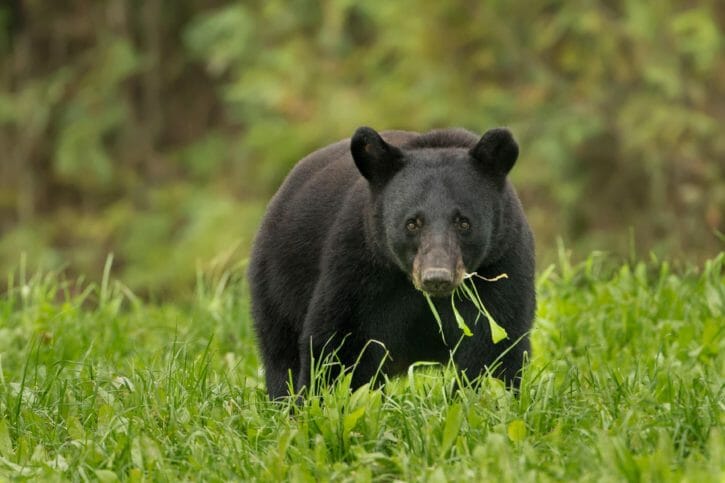Let’s Talk Bears
The following article is about bears in Utah. If you are adventuring, hiking or camping in Utah, please read the following section. The listed points made in this article will educate you and give you life-saving tips concerning bear encounters in Utah. Most of the information we gathered from nps.gov web pages and other pages on the internet. Some of the information has come from word of mouth. This article is by no means a complete guide to bear encounters but should entice you to seek and learn more about bears in the wild and more specifically about bears in Utah, especially if you plan an outdoor adventure in Utah and more specifically in or near Bryce Canyon National Park.
25 Things To Know
1. Are there bears in Utah?
Yes.
2. What kinds of bears live in Utah?
Black bears can be found in Utah. There are no Grizzly Bears in Utah. The last known grizzly bear was killed in 1927. All of the grizzly bears have been extirpated (root out and destroy completely).
3. How many black bears inhabit the State of Utah?
Estimates range from 1500 – 3000 total black bear population.
4. Are there bears in Bryce Canyon?
Bryce Canyon Park officials estimate that there are between 10 and 12 black bears in the park throughout the year.
5. Where do the bears live in Utah?
If the state of Utah were divided into four quadrants, the upper right quadrant would contain most of the bear population in Utah. Most of the bears live in the Uintah Mountains and the Boulder Mountains range.
6. Are bears carnivores?
Yes. But meat is less than 10% of their diet. Most of the meat is scavenged. Most of a bear’s diet is insects, nuts, berries, grasses.
7. How long do bears live?
25 years +
8. What do black bears weigh?
Females = 120 -250 lbs
Males = 180 – 300 lbs
9. If I encounter a black bear do I play dead?
NO.
10. Should I climb a tree?
NO. Bears are natural tree climbers. Climbing a tree is a bad idea.
11. Should I run?
NO. Bears can run 35mph. Back away from the bear and Do Not turn your back.
12. Is the bear aggressive when it stands up or makes noises?
Not necessarily. Most likely the bear is trying to decide if you should be a concern to him.
13. Should I make direct eye contact with a bear?
NO. The bear may consider this a threat. Avoid direct eye contact.
14. Should I carry Bear-Spray? Is it effective?
YES. If the bear continues to approach, use your bear spray. You should have bear spray with you at all times while hiking and camping and adventuring. Bear spray is known to be over 90% effective at preventing a bear attack.
15. What should I do if I have a firearm?
If you have to, shoot to kill. Do not fire a warning shot. That’s right, shoot to kill. Hopefully, it doesn’t come to this point.
16. If the bear attacks should I fight back?
Yes. Defend yourself with anything you have. This might include backpacks, rocks, sticks, bottles, even your feet, and hands.
17. What are the chances I will see a bear?
Not very likely. Most people will never see a bear in Bryce Canyon or on Public Lands.
18. Should I use airtight containers that prevent smells from escaping?
Yes. Always use airtight containers. Bears can smell scents from miles away. Even if you don’t see a bear, that doesn’t mean they aren’t there. National Parks Service will give you airtight containers to use. All you have to do is ask.
19. Where should I keep the food while camping?
Keep the food in your car if you can, otherwise tie it up in a tree. Never have the food and containers in or near your tent.
20. Can I cook near my tent and sleeping quarters?
No. Cook away from your tent. Do not leave food scraps out in the open or unsealed. The last thing you want is a bear to come snooping around and then get curious about what’s sleeping inside of the tent.
21. When do bears mate?
Typically they breed during June and July.
22. When are cubs born?
Typically during January and February.
23. Is it ever okay to feed a bear or approach a bear?
No. It’s illegal and very unsafe. It’s not worth it. Even if you think you are being fun and you get away with it, you could be harming the next passerby. If you see a bear cub, the mother is surely close by. This is one of the most dangerous things you could do. Cubs typically stay with their mother for about 1.5 years.
24. Is there a specific elevation where bears live and thrive?
Bears generally are found at 7000 – 10,000 feet elevations.
25. When hiking with kids should the kids be left alone?
No. When hiking let the children be in the middle of the group flanked by adults.

Photo by usfw
Bears in the Wild
You can never know enough things about bears in the wild. Until you encounter a bear in the wild, these are just fun facts. But knowing these facts could save your life. Of all these things, make sure you have bear spray. Don’t go out there without it. Bear spray doesn’t cost very much ($12 – 30), but if you ever actually needed it, it would be priceless. Stay safe out there! And remember the words of John Muir, “Of all the paths you take in life, make sure a few of them are dirt.”

